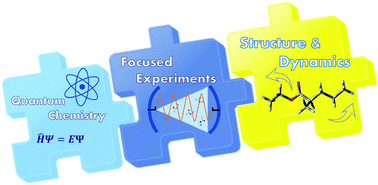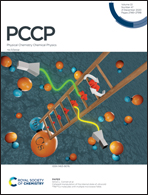Quantifying soft degrees of freedom in volatile organic compounds: insight from quantum chemistry and focused single molecule experiments†
Abstract
Sampling of the vast conformational landscape of organic compounds remains a challenging task in computational chemistry, especially when it comes to the characterization of soft-degrees of freedom and relatively small energy barriers between different local minima. Therefore, studying the intrinsic properties of isolated molecules using focused experiments such as high-resolution molecular spectroscopy provides a powerful approach to validate and improve available quantum chemical methods. Here, we report on the most abundant gas-phase structure of ethyl 2-methyl pentanoate under molecular jet conditions, which we used to benchmark several exchange–correlation functionals and ab initio methods at the quantum chemical level. The observed conformer of ethyl 2-methyl pentanoate in the gas-phase is of C1 symmetry and exhibits a large amplitude motion around the C–C bond in proximity to the carbonyl moiety, which, unlike in the case of its structural isomer ethyl 2-ethyl butyrate, is very sensitive to the applied quantum chemical method and basis set. Depending on the applied quantum chemical method, the dihedral angle of the lowest energy conformer is optimized to absolute values of ±20°. This is far above the usual convergence error of the theoretical methods and has a tremendous impact on the rotational constants of this conformer, which complicates the prediction of rotational spectra and the assignment of experimental data. We show that the loss of symmetry in the aliphatic chain bound to the carboxylic moiety of ethyl esters results in a shift of the dihedral angle value due to a flat potential well around the corresponding C–C bond. Our benchmark calculations further indicate the potential relevance of the wB97X-D functional for this ethyl pentanoate and other related ethyl esters.



 Please wait while we load your content...
Please wait while we load your content...